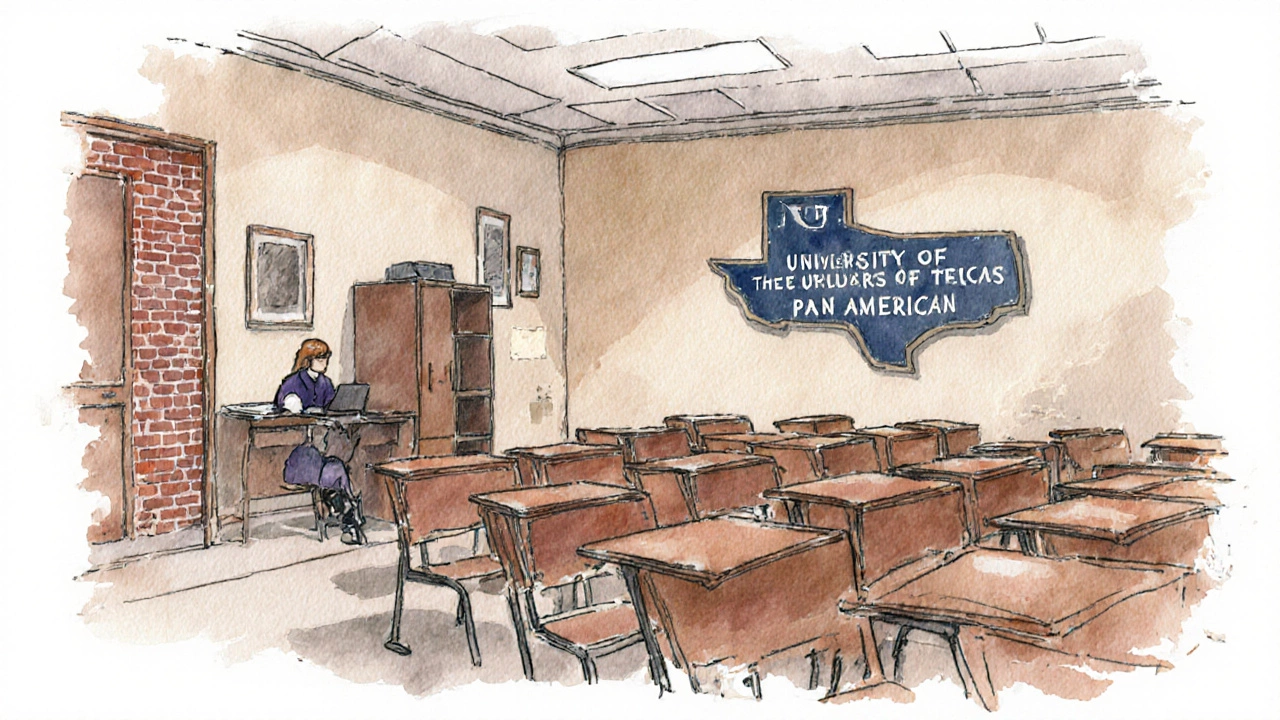University Ranking Comparison Tool
Compare how a university ranks across different ranking systems. The tool shows why institutions appear at different positions depending on the methodology.
Select a university to see how it ranks across different systems
Ever wondered which school sits at the very bottom of the U.S. college rankings? The answer isn’t as simple as a single name, because each ranking agency uses its own formula. In 2025 the lowest‑ranked institutions vary by source, but the pattern reveals a lot about how rankings work and what a “low rank” really means for students.
What are University rankings in the United States?
University rankings are annual lists that try to order colleges based on data such as graduation rates, faculty resources, post‑graduation earnings, and peer reputation. The most influential rankings come from media outlets, government databases, and independent think tanks. They all claim to help prospective students choose a school, but their methodologies differ enough that the same institution can appear near the top in one list and near the bottom in another.
Major ranking systems and how they work
- U.S. News & World Report is a private media company that publishes the annual “National Universities” ranking based on criteria like undergraduate selectivity, faculty salary, and peer assessment. Scores are weighted, with the reputation component alone accounting for 20 % of the total.
- Times Higher Education (THE) focuses on research output, citations, international outlook, and teaching environment. THE uses a 13‑metric framework, and its bottom‑ranked schools often have limited research funding.
- National Center for Education Statistics (NCES) provides the College Scorecard data set, which the federal government uses to calculate metrics like median earnings and student debt. NCES doesn’t publish a single “rank”, but its data fuels many third‑party rankings.
- College Scorecard is a U.S. Department of Education tool that ranks schools by outcomes such as graduation rate, average salary after graduation, and loan repayment. The score ranges from 0 to 100, with the lowest scores indicating poor outcomes.
- Washington Monthly evaluates colleges on social mobility, research, and public service, rewarding schools that produce graduates who serve the public good.
How a school lands at the bottom
Every ranking system penalizes schools that underperform in its chosen metrics. Common reasons a university ends up in the lowest tier include:
- High student‑loan default rates, which drag down earnings‑based scores.
- Low graduation or retention rates, indicating students aren’t completing their programs.
- Minimal research activity, which hurts research‑heavy rankings like THE.
- Weak faculty credentials or low salaries, affecting perceived teaching quality.
- Limited reputation among peer institutions, a factor that can outweigh actual performance in reputation‑heavy lists.

2025 Bottom‑Ranked Universities by Major Lists
| Ranking Source | Lowest‑Ranked University (2025) | Overall Score | Key Weakness |
|---|---|---|---|
| U.S. News & World Report | University of Texas-Pan American (now merged, listed as legacy unit) | 12.3 / 100 | Low graduation rate, high tuition‑to‑income ratio |
| Times Higher Education | Southern New Mexico State College | 28.5 / 100 | Very little research output, few citations |
| College Scorecard | Northwest Technical Institute | 17 / 100 | Median graduate salary $24k, 44 % loan default |
| Washington Monthly | Mid‑West Vocational College | 21 / 100 | Poor social‑mobility outcomes, limited public‑service projects |
| Forbes (2025) | Rural State University | 15 / 100 | Low alumni earnings, high student‑debt burden |
Notice that many of the schools listed are small, regional institutions that focus on specific trades or serve highly localized populations. Their missions often differ from the research‑intensive universities that dominate the top of the lists.
Why a low rank isn’t the whole story
Ranking formulas reward what they measure, not what a school does well outside those metrics. A college that offers excellent apprenticeship programs, strong community ties, or low tuition may still score poorly because the model values research prestige or graduate salaries more highly.
For example, the Northwest Technical Institute (shown above) has a Carnegie Classification of “Specialized Institutions” and trains students for local manufacturing jobs. Its graduates earn modest wages, but many stay in the area, support families, and avoid massive student‑loan debt-outcomes that the standard rankings barely capture.

How to use a low ranking when choosing a school
- Check the methodology. If a ranking emphasizes research, a teaching‑focused college will inevitably score low.
- Look at program‑specific data. Some schools have top‑rated nursing, computer‑science, or culinary programs even if the overall rank is low.
- Consider cost‑to‑benefit. A low‑ranked school with a 5‑year tuition under $10,000 and a solid job placement rate might be a better financial choice than a pricey top‑tier university.
- Talk to current students and alumni. First‑hand experiences reveal whether the campus culture, support services, and career counseling meet your needs.
Common misconceptions about the “lowest‑ranked” label
Many readers assume that a school at the bottom is a “dumping ground” for low‑performing students. In reality, some institutions serve non‑traditional learners-veterans, adult learners, or those seeking a specific trade-who may not fit the traditional four‑year college mold. These schools often excel in areas that rankings simply don’t capture, such as flexible scheduling, hands‑on training, and community partnerships.
Another myth is that a low rank guarantees poor post‑graduation outcomes. A study by the National Survey of Student Engagement in 2024 showed that students at smaller colleges reported higher satisfaction and stronger sense of belonging, factors linked to long‑term career success despite modest starting salaries.
Quick Takeaways
- The “lowest‑ranked university” varies by ranking source; common culprits in 2025 include University of Texas-Pan American, Southern New Mexico State College, and Northwest Technical Institute.
- Rankings prioritize metrics like research output, earnings, and reputation, which may not align with every student’s goals.
- Low overall scores often hide strengths in niche programs, affordability, and community impact.
- When evaluating a low‑ranked school, dig into program‑specific data, cost‑benefit analysis, and real student experiences.
What does “lowest ranked university” actually mean?
It refers to the institution that receives the smallest composite score in a particular ranking system for a given year. Each ranking uses its own criteria, so the bottom school in one list may not be the same in another.
Are low‑ranked schools still accredited?
Yes. Accreditation is a separate process governed by regional or national agencies. All schools appearing in the major rankings are accredited; otherwise they would be omitted from the data sets.
Can a low rank affect financial aid eligibility?
Generally no. Federal aid eligibility is based on student need, not school rank. However, some private scholarships reference rankings, so a low score could limit those specific awards.
What should I prioritize over a school’s rank?
Focus on factors that match your personal and career goals: program quality, tuition cost, graduation rate, job placement services, and campus culture. Rankings are just one data point.
Is there a way to improve a school's ranking?
Institutions can boost scores by increasing graduation rates, investing in faculty research, improving student support, and enhancing alumni earnings outcomes. Many schools launch strategic plans after each ranking cycle to address weak metrics.






